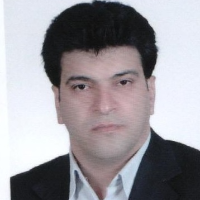Evaluation of AKT and mTOR Protein Changes in Response to Eccentric and Concentric Physical Activity in Healthy Young Men
The target of Rapamycin is a 290 kDa protein that was created in the 1970s from the isolation of a yeast resistant to cell growth inhibitory properties. Each complex is phosphorylated by a different substrate and is known as the main controller of cell growth. MTOR exists in mammals in the form of Rapamycin, which is divided into two groups, MTORC1 and MTORC2. Each complex performs different tasks according to its location in the cell. This pathway is involved in the regulation of Lipogenesis, glucose metabolism, cytoskeletal activity, and apoptosis (programmed cell death). MTOR creates conditions in the human body that are very suitable for positive cell growth; For example, it is involved in gene expression and translation of various cell proteins (enzymes and contractile proteins), ribosome biogenesis, activation of the protein kinase C (PKC) synthesis pathway that causes muscle growth, and also the strength of the cell skeleton. To be On the other hand, it prevents apoptosis, protein burning (autophagy), and excessive turnover of nutrient carriers, including glucose and amino acids. Inhibition of FoxO proteins by AKT through transcriptional mechanisms increases cell survival. AKT stimulates cell growth and proliferation through mTORC1. It also increases VEGF secretion and eNOS phosphorylation mediates vasodilation and angiogenesis. AKT increases cellular metabolism through downstream targets such as GLUT4 and GSK3. One of the main drivers of mTOR pathway activation is the pressure and mechanical load applied to the muscle. Growth factors, nutrients, hormones, and cytokines are other stimuli of the mTOR pathway. After this stage, AKT improves the activity of two pathways, mTOR and glycogen synthase kinase 3 beta; which play a key role in skeletal muscle hypertrophy in response to strength training. After mTOR is phosphorylated, PV0s6k, which stimulates protein synthesis, is phosphorylated, on the other hand, muscle growth inhibitory factors such as 4e-bpi and eif2 are inhibited. Another importance of the AKT/mTOR pathway is the inhibition and inactivation of the FOXO or FKHR factor. FOXO is the main factor in the activation of the ubiquitin-protease system, which causes the breakdown of contractile proteins. In fact, the AKT/mTOR pathway prevents atrophy and breakdown of skeletal muscle proteins with its activity. Research shows that strength training inhibits FOXO and Atrogenin by activating the AKT/mTOR pathway and thus prevents muscle atrophy. Based on the research conducted on the relationship between mTOR/AKT pathway and sports activity, it can be said that this pathway is activated especially in strength training and for hypertrophy. Of course, it should be said that this route has other duties as well. But in general, it is an anabolic pathway; but how the duration, intensity, and type of exercise affect mTOR/AKT levels in humans is still unanswered. The activity of the mTOR/AKT pathway depends on the age, sex, type, and intensity of the performed activity, the type and rate of contraction speed (introverted-extroverted), and also the type of tar. Therefore, in the present study, the researcher intends to evaluate the expression of mTOR/AKT proteins by comparing a single eccentric and concentric session.
10 healthy men were randomly divided into two groups (concentric group of 5 people, eccentric group of 5 people). Isokinetic contraction included eccentric and concentric knee extension with maximal strength and speed. In order to equalize the workload in both protocols, it was considered the same and the round trip speed was 60°/s. The contractions included 12 sets of 10 repetitions for the right leg, the rest time between each set was 30 seconds. A biopsy was performed at the beginning and end of the study. Biopsy was performed in both distal and proximal directions of the vastus lateralis muscle. In order to check the expression of mTOR and AKT proteins in each group, the tissues were examined by immunocytochemistry technique. The dependent t statistical method and covariance test were used to analyze the data.
The results showed that the intragroup changes of mTOR and AKT proteins after one activity session were significant in the extrovert and introvert groups (p≤0.05). However, the inter-group changes of mTOR and AKT proteins showed no difference between the two groups.
Many adaptations, such as increasing strength and lean mass, are caused by repeated resistance training, and this is due to the high degree of plasticity of skeletal muscle in response to training pressure. Different training stimuli in resistance sports can create different molecular responses related to the special adaptations of skeletal muscle to the type of resistance training. Prescribing a resistance program should be done according to the manipulations done in the variables. Exercise variables include intensity, volume, and time under tension. Manipulation of each of these variables can affect the final result. Of course, it should be kept in mind that manipulating only one variable can make it impossible to study the effect of other variables in molecular responses. In total, the present study showed that a session of eccentric and concentric activity leads to changes in the factors involved in strength and hypertrophy. In addition, these changes are generally greater in eccentric than concentric contractions.
- حق عضویت دریافتی صرف حمایت از نشریات عضو و نگهداری، تکمیل و توسعه مگیران میشود.
- پرداخت حق اشتراک و دانلود مقالات اجازه بازنشر آن در سایر رسانههای چاپی و دیجیتال را به کاربر نمیدهد.



